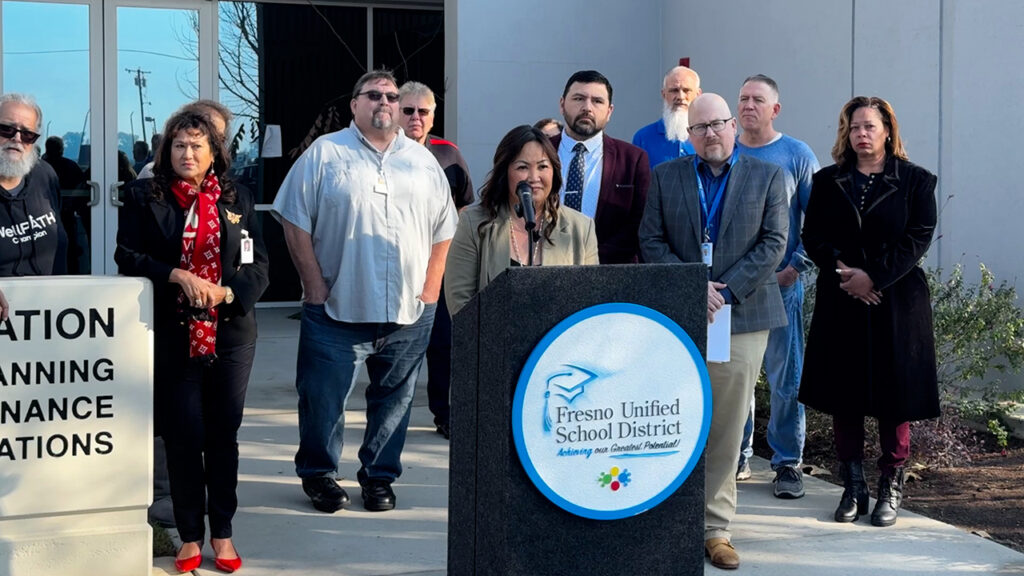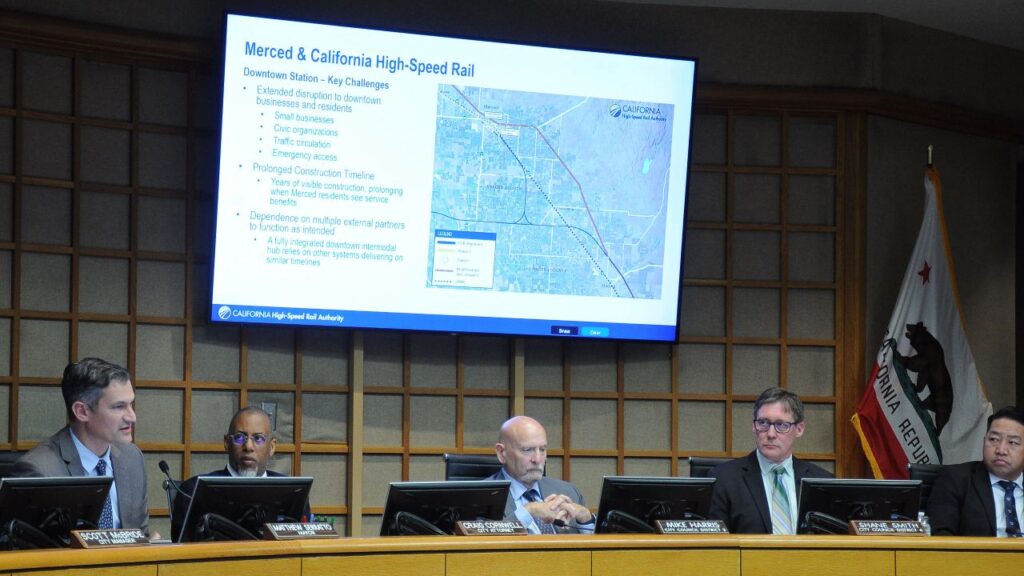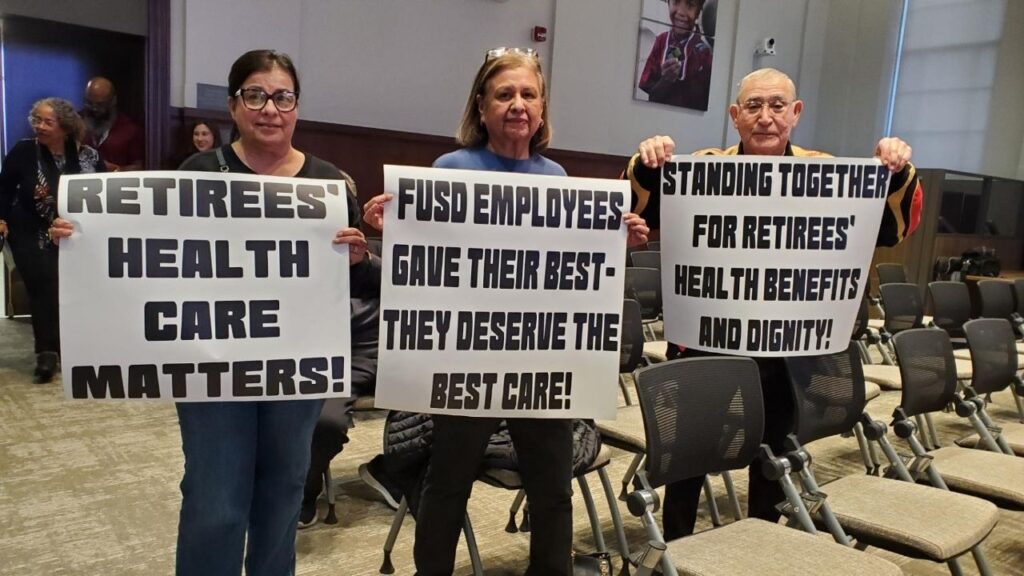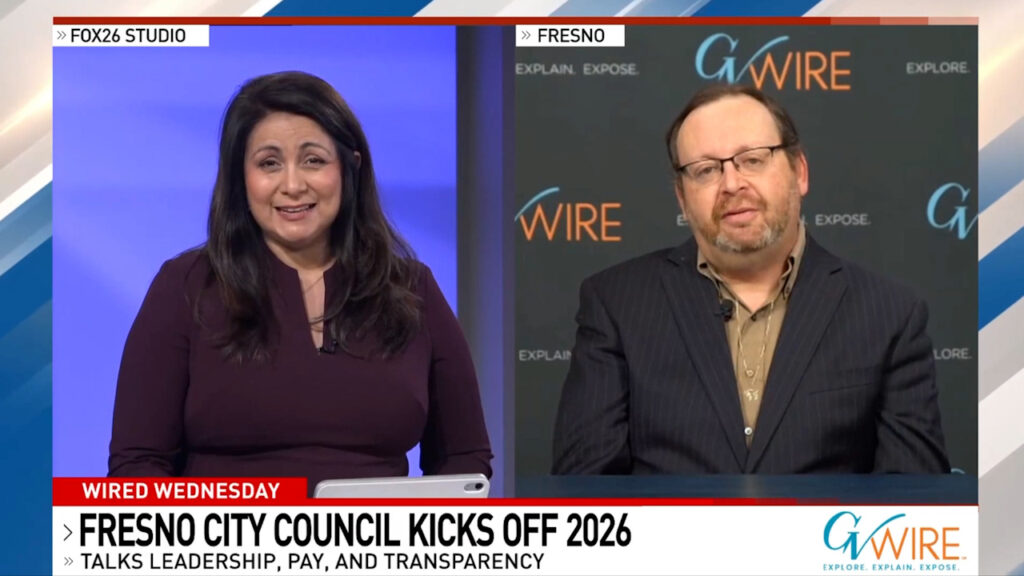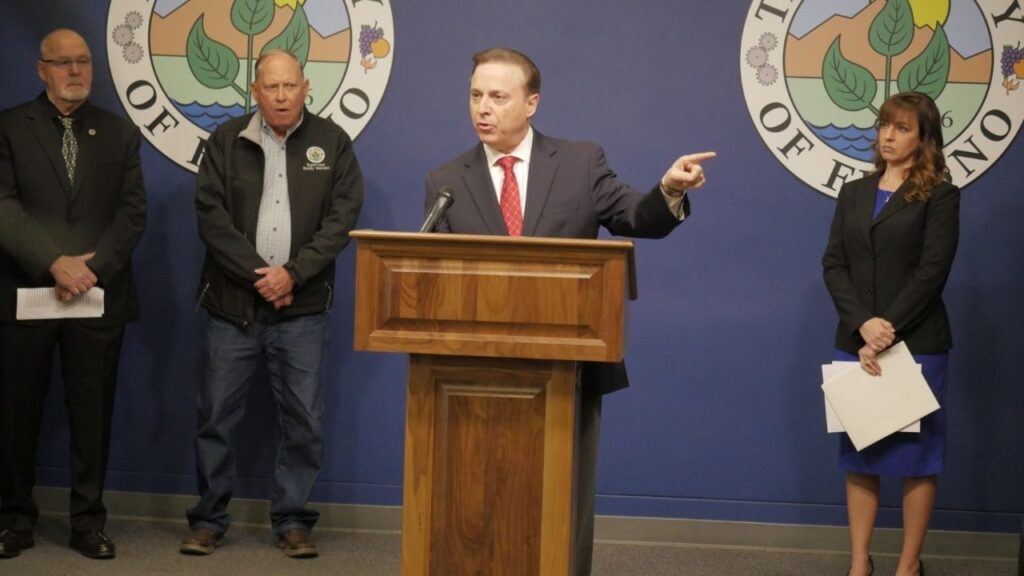Share
![]()
■California’s greenhouse gas emissions increased by 3.4% in 2021.
■The state needs to triple its rate of reducing greenhouse gases to meet 2030 targets.
■The state is updating its climate programs and strengthening regulations to meet these goals.
California will fail to meet its ambitious mandates for combating climate change unless the state almost triples its rate of reducing greenhouse gases through 2030, according to a new analysis released today.

Alejandro Lazo
CalMatters
After dropping during the pandemic, California’s emissions of carbon dioxide, methane and other climate-warming gases increased 3.4% in 2021, when the economy rebounded. The increase puts California further away from reaching its target mandated under state law: emitting 40% less in 2030 than in 1990 — a feat that will become more expensive and more difficult as time passes, the report’s authors told CalMatters.
“The fact that they need to increase the speed of reduction at about three times faster than they’re actually doing — that does not bode well,” said Stafford Nichols, a researcher at Beacon Economics, a Los Angeles-based economics research firm, and a co-author of the annual California Green Innovation Index released today.
“As we get closer to that 2030 goal, the fact that we’re further off just means that we have to decrease faster each year.”
The state is even further away from meeting a more aggressive goal set by the Air Resources Board in the state’s new climate blueprint. Under that plan, greenhouse gases must be cut 48% below 1990 levels by 2030. Gov. Gavin Newsom had urged the board to adopt the more difficult goal, calling the new scoping plan the “most ambitious set of climate goals of any jurisdiction in the world.”
David Clegern, an air board spokesman, said in an emailed statement to CalMatters that state officials are confident that California will hit its targets, including its goal of carbon neutrality by 2045.
Clegern said the state is in the midst of updating its climate programs and strengthening regulations, which, he said, “takes time” because they have to “translate into projects and action in the real world.”
“It is more important than ever to transition existing facilities, and build clean energy infrastructure,” Clegern said. “This decade is critical for implementation of the state’s plans and policies. ” He added, “as we have stated for more than 10 years, California’s climate plans will continue to adjust to what remains a developing threat.”
Greenhouse gases are spewed by an array of sources, mostly from vehicles, industries and power plants that burn fossil fuels, but also from livestock, landfills and other sources.
The report, compiled by Beacon Economics and environmental nonprofit Next 10, analyzed state data and concluded that through 2030, California would have to cut all greenhouse gases by 4.4% every year, beginning back in 2022. (Only preliminary data is available for 2022.)
To put that challenge in perspective, the state has only achieved annual cuts of more than 4% twice over the last two decades, both during major recessions, in 2009 and 2020, according to Stephanie Leonard, director of research for Next 10. And from 2016 through 2021, the annual average reduction has been just 1.6%, according to the report.
“We need each program to perform as well as or better than identified in the scoping plan in order to achieve our goals.”
–Liane Randolph, chair of the California Air Resources Board
Massive amounts of emissions — more than 100 million metric tons a year — will have to be eliminated for California to meet the mandate. The state couldn’t spew more than about 258 million metric tons of carbon dioxide equivalent emissions in 2030, compared to 2021’s 381 million, according to the report.
Liane Randolph, chair of the California Air Resources Board, told the state Legislature’s joint committee on climate change policies on Monday that there is little room for error in the years ahead.
“The challenge is that we need all of our programs to be effective and reduce emissions as laid out in the scoping plan,” Randolph said. “We need each program to perform as well as or better than identified in the scoping plan in order to achieve our goals.”
Power Plants and Cement Are Major Emitters
California already has made substantial progress cleaning up cars and trucks. It has the world’s strictest emissions controls on vehicles, including a regulation that phases out new sales of gasoline-powered cars by 2035. Last year, electric vehicle sales were up 29%, though they slowed at year’s end.
But electricity generation was responsible for some of the biggest increases in emissions between 2020 and 2021, a 6.7% increase for imported electric power and 3.9% for in-state power, the report found.
That’s because California’s drought resulted in less hydroelectric power and more reliance on natural gas to avoid power shortages, according to Leonard. In 2020, the state faced its first non-wildfire rolling blackouts in nearly two decades after record-breaking heat. Last year, the state extended operations at three natural gas plants along the Southern California coast to shore up California’s straining power grid.
Natural gas plants are the largest source of greenhouse gases among California’s in-state producers of electricity. California has a law mandating zero-carbon, all-renewable electricity by 2045 but it has a long way to go: About 42% of power generated in the state came from natural gas in 2022.
“It will take more action, time and resources to further decarbonize the economy, but the last couple decades offer hope.”
–2024 California Green Innovation Index
The report also highlighted cement facilities, saying California has some of the planet’s most polluting cement plants. As more housing is built and more cement is produced, the authors recommended “urgent action” to cut those emissions.
California’s seven cement plants emit about 7.5 million metric tons of greenhouse gases per year, according to the air board, which has a working group aimed at decarbonizing the industry. Some factories are turning to low-carbon fuels, including the burning of tires.
Carbon capture and storage technology also may be used at cement plants because they are so difficult to decarbonize. These facilities capture emissions from industrial plants, then inject them underground.
“California’s cement plants are an example of the challenge. Our cement is more carbon-intensive because we have older plants,” said Clegern of the air board.
Wildfires were another large emitter of carbon dioxide, methane and other greenhouse gases in 2021.
“Too often the fact of California’s historical accomplishments is cited as evidence that state policy is on track, when often the pace of change going forward falls well short.”
–Danny Cullenward, Independent Emissions Market Advisory Committee
On an optimistic note, the report acknowledged that California has some of the lowest per-capita emissions in the U.S., and is the third-most carbon-efficient state, following New York and Massachusetts. However, many of the easiest and least costly steps have already been implemented. So finding room for future reductions will be more challenging in coming years.
“The state has shown that it is possible to grow the economy, while lowering emissions,” the California Green Innovation Index says. “It will take more action, time and resources to further decarbonize the economy, but the last couple decades offer hope.”
The new analysis is the most recent example of an outside entity warning that California’s climate goals face major hurdles. The state’s Legislative Analyst’s Office said last year that California lacked a “clear strategy” for meeting its 2030 targets.
Also, last month, the state’s advisory committee for its controversial cap and trade market noted that the state was not on track to meet 2030 targets. Cap and trade is the state’s market that allows companies to buy and trade credits for reducing greenhouse gases.
“Too often the fact of California’s historical accomplishments is cited as evidence that state policy is on track, when often the pace of change going forward falls well short of what is required to meet the state’s next climate targets,” Danny Cullenward, an economist and vice chair of the Independent Emissions Market Advisory Committee told CalMatters.
“Unfortunately,” he said, “the state is not on track for its 2030 climate target.”
About the Author
Alejandro is a climate reporter who previously reported on issues of inequality for the California Divide team. He joined CalMatters from The Wall Street Journal, where he covered the West Coast for eight years. He previously wrote about housing and real estate for the Los Angeles Times and The Washington Post. He’s a native of Modesto who attended the University of San Francisco and the Columbia University Graduate School of Journalism.
About CalMatters
CalMatters is a nonprofit, nonpartisan newsroom committed to explaining California policy and politics.
RELATED TOPICS:
Categories

Fresno Honors ‘The Voice’ of Ralph Edwards






